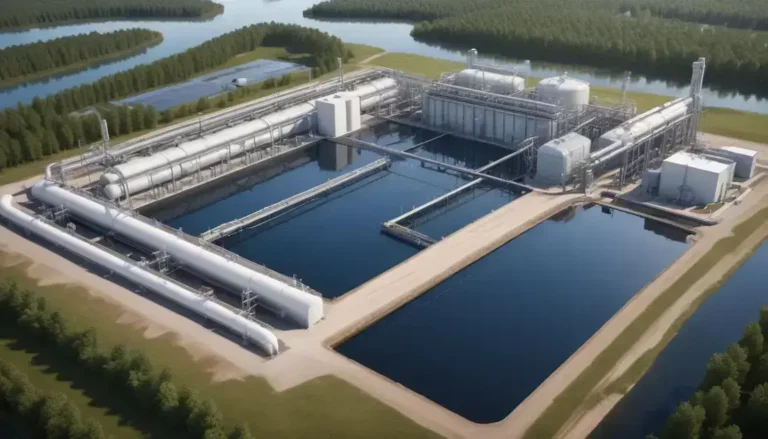Mizuho’s Commitment to Carbon Removal Solutions
Carbon removal involves technology-driven methods to capture and store carbon dioxide, playing a crucial role in combating climate change and enabling businesses to offset their emissions through carbon credit markets.
Carbon removal is gaining momentum in the fight against climate change. Mizuho Financial Group’s recent participation in innovative initiatives highlights its pivotal role in advancing technology-driven solutions. Curious about the details? Let’s dive in!
Mizuho Joins NextGen CDR Facility
Mizuho Financial Group is making significant strides by joining the NextGen Carbon Dioxide Removal (CDR) facility. This initiative emphasizes the importance of innovative technology in combating climate change. With a growing need for effective carbon removal solutions, Mizuho aims to leverage cutting-edge methods that could revolutionize the way we address emissions.
The NextGen CDR facility is a collaborative effort involving various stakeholders, including environmental organizations, technology firms, and policymakers. This multifaceted approach underscores the need for interdisciplinary cooperation in the fight against global warming. By participating, Mizuho not only enhances its commitment to sustainability but also positions itself as a leader in implementing comprehensive climate strategies.
Additionally, the facility’s focus on technology-driven solutions represents a critical shift in carbon management. Traditional methods often fall short of achieving substantial reductions in atmospheric CO2 levels. Therefore, the partnership with the NextGen CDR facility allows Mizuho to explore novel approaches, which could include advancements in capture technologies and scalable carbon storage techniques.
Ultimately, this collaboration highlights Mizuho’s proactive stance in the evolving landscape of environmental investment. By investing in state-of-the-art carbon removal solutions, they set a precedent for other financial institutions to follow suit, promoting a more sustainable future.
The Importance of Technology-Based Carbon Removal
The emergence of technology-based carbon removal solutions is vital in addressing the pressing issue of climate change. As traditional methods struggle to keep up with the rising levels of carbon emissions, innovative technologies offer promising alternatives that could significantly curb atmospheric CO2.
One of the primary advantages of these technologies lies in their ability to capture carbon emissions directly from industrial processes. This approach not only reduces the carbon footprint of businesses but also paves the way for a sustainable circular economy. By utilizing advances in carbon capture utilization and storage (CCUS), we can transform what was once a liability into a valuable resource.
Moreover, technology-based carbon removal solutions provide scalability and efficiency. Unlike conventional methods, which often require extensive land use or may have limited capacity, these innovations can be deployed more quickly and in a modular fashion. This adaptability makes them suitable for various industries looking to meet their sustainability goals.
Investments in research and development are crucial for the continued advancement of these technologies. Collaboration between governments, private sectors, and academia can accelerate the deployment of effective carbon removal solutions, ensuring a cleaner environment and a sustainable future.
Future Prospects for Carbon Credit Markets
The future of carbon credit markets looks promising as global awareness of climate change intensifies. These markets provide a unique mechanism for businesses and governments to offset emissions by investing in sustainable projects. As more entities recognize their environmental responsibilities, the demand for carbon credits is expected to rise.
Currently, several factors influence the dynamics of carbon credit markets. Regulatory frameworks and governmental policies play a crucial role in establishing standards and ensuring transparency. The introduction of more stringent emission targets pushes companies to seek credits actively, creating a robust marketplace.
Furthermore, advancements in technology enhance the tracking and verification of carbon offsets. Innovative platforms will enable stakeholders to participate more easily, making the process accessible and efficient. Blockchain technology could revolutionize the carbon trading landscape by providing immutable records for carbon credits.
Investment in renewable energy projects, reforestation, and carbon capture initiatives is also expected to increase, feeding the carbon credit market with high-quality offsets. As businesses strive to achieve their sustainability goals, the integration of carbon credits into corporate environmental strategies will become an essential component for many.
In conclusion: The path forward for carbon strategies
The growing urgency to address climate change makes understanding carbon removal and credit markets essential. By engaging in technology-driven carbon solutions and supporting carbon credit markets, businesses can take proactive steps toward sustainability.
As Mizuho and others lead the way, opportunities for innovation and investment will continue to expand. The future holds the promise of a cleaner environment, driven by collaborative efforts and responsible actions.
Everyone has a role to play in this journey. Embracing these strategies will help ensure a healthier planet for future generations.
Frequently Asked Questions
What is carbon removal, and why is it important?
Carbon removal refers to methods used to capture and store carbon dioxide from the atmosphere. It is crucial in combating climate change and achieving net-zero emissions.
How do carbon credit markets work?
Carbon credit markets allow businesses to buy and sell credits that represent the right to emit a certain amount of carbon dioxide. Companies can offset their emissions by investing in projects that reduce or remove carbon.
What technology is being used for carbon capture?
Various technologies such as direct air capture, carbon capture utilization and storage (CCUS), and bioenergy with carbon capture are being developed to efficiently capture carbon emissions from industrial processes and the atmosphere.
Why should businesses invest in carbon credits?
Investing in carbon credits helps businesses meet regulatory requirements, enhance their corporate social responsibility, and support sustainability initiatives, which can also improve their public image.
What role do financial institutions play in carbon removal strategies?
Financial institutions like Mizuho can fund and facilitate investments in carbon removal technologies and projects, providing necessary capital for sustainable innovations.
How can individuals contribute to carbon removal efforts?
Individuals can reduce their carbon footprint by supporting sustainable practices, using renewable energy sources, and offsetting their emissions through purchasing carbon credits or investing in green initiatives.






